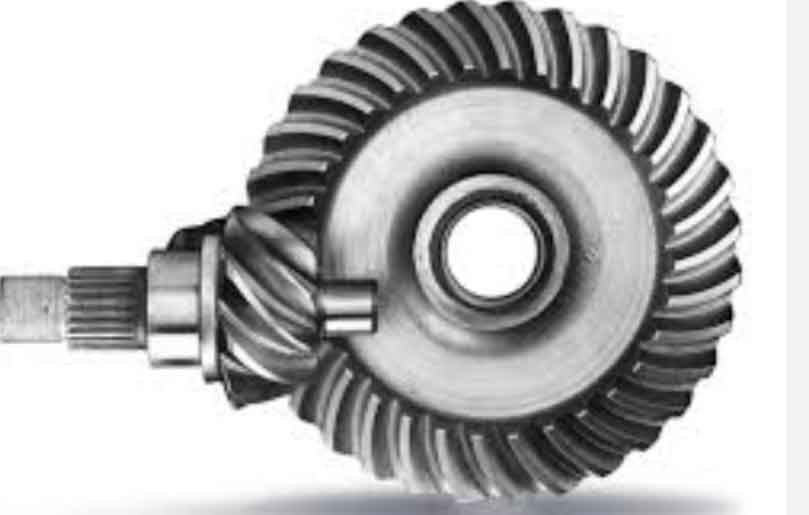Automotive rear differentials play a crucial role in distributing power to the wheels and enhancing vehicle handling and traction. Hypoid gears are commonly used in rear differentials to improve their performance in various ways:

- Angle Offset: Hypoid gears are designed with an offset between the axes of the pinion gear and the ring gear. This offset allows the gears to mesh at an angle, which enables a smoother and quieter operation compared to straight bevel gears. The angled teeth engagement reduces noise and vibration, contributing to a more comfortable driving experience.
- Higher Torque Capacity: Hypoid gears have a larger diameter than straight bevel gears, resulting in more significant surface contact area between the teeth. This enhanced contact area allows hypoid gears to handle higher torque loads, making them well-suited for rear differentials in vehicles with higher power and torque outputs.
- Improved Efficiency: The offset design of hypoid gears allows for optimized tooth contact patterns, resulting in improved efficiency during power transmission. This efficiency contributes to better fuel economy and reduced energy loss, benefiting the overall performance of the vehicle.
- Traction Enhancement: Hypoid gears in rear differentials can be configured to provide various gear ratios, which can improve traction and handling in different driving conditions. For example, by adjusting the gear ratio, the differential can provide more torque to the wheel with better traction, helping the vehicle navigate through slippery or uneven surfaces more effectively.
- Limited-Slip Differential (LSD): Hypoid gears are commonly used in limited-slip differentials, which are designed to distribute torque to both wheels while allowing some level of differentiation between the wheels. LSDs enhance traction by directing power to the wheel with better grip, reducing the chance of wheel spin and improving stability during cornering.
- Versatility and Adaptability: Hypoid gears can be designed with various gear ratios and configurations, allowing automotive engineers to fine-tune the performance characteristics of the rear differential to suit the specific requirements of a vehicle’s drivetrain and suspension system.
- Reduced Size and Weight: The offset design of hypoid gears allows for a more compact and lightweight differential assembly, which is advantageous for optimizing the vehicle’s weight distribution and overall performance.
Due to their benefits in terms of handling, traction, and power distribution, hypoid gears are widely used in rear differentials of various vehicles, including passenger cars, trucks, SUVs, and high-performance sports cars. The selection of hypoid gears in rear differentials is driven by the need for smooth and efficient power transmission while ensuring superior handling and traction characteristics.
